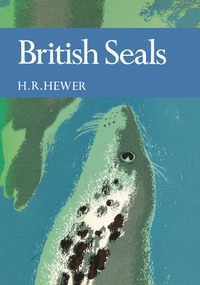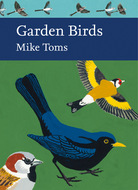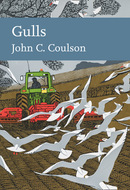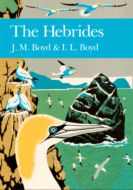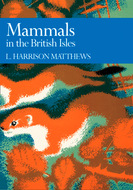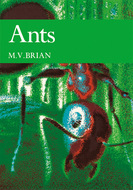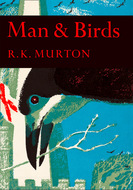Raamatut ei saa failina alla laadida, kuid seda saab lugeda meie rakenduses või veebis.
Loe raamatut: «British Seals»

COPYRIGHT
William Collins
An imprint of HarperCollinsPublishers Ltd 1 London Bridge Street London SE1 9GF WilliamCollinsBooks.com
First published 1974
This eBook edition published by William Collins in 2019
© H. R. Hewer 1974 The author asserts his moral rights to be identified as the author of this work
A catalogue record for this book is available from the British Library.
All rights reserved under International and Pan-American Copyright Conventions. By payment of the required fees, you have been granted the non-exclusive, non-transferable right to access and read the text of this eBook on-screen. No part of this text may be reproduced, transmitted, downloaded, decompiled, reverse engineered, or stored in or introduced into any information storage and retrieval system, in any form or by any means, whether electronic or mechanical, now known or hereinafter invented, without the express written permission of HarperCollins Publishers.
HarperCollinsPublishers has made every reasonable effort to ensure that any picture content and written content in this ebook has been included or removed in accordance with the contractual and technological constraints in operation at the time of publication.
Source ISBN 9780007311118
Ebook Edition © FEBRUARY 2019 ISBN: 9780007406463
Version: 2019-02-13
NOTE TO READERS
This ebook contains the following accessibility features which, if supported by your device, can be accessed via your ereader/accessibility settings:
Change of font size and line height
Change of background and font colours
Change of font
Change justification
Text to speech
Page numbers taken from the following print edition: ISBN 9780007311118
EDITORS:
Margaret Davies C.B.E. M.A. Ph.D.
Sir Julian Huxley F.R.S. M.A. D.Sc.
John Gilmour M.A. V.M.H.
Kenneth Mellanby C.B.E. Sc.D.
PHOTOGRAPHIC EDITOR:
Eric Hosking F.R.P.S.
The aim of this series is to interest the general reader in the wild life of Britain by recapturing the inquiring spirit of the old naturalists. The Editors believe that the natural pride of the British public in the native fauna and flora, to which must be added concern for their conservation, is best fostered by maintaining a high standard of accuracy combined with clarity of exposition in presenting the results of modern scientific research.
CONTENTS
COVER
TITLE PAGE
COPYRIGHT
NOTE TO READERS
PLATES
FIGURES
EDITORS’ PREFACE
AUTHOR’S PREFACE
1. The Pinnipedia
2. The grey seal – introductory
3. The grey seal – age determination, longevity and maturity
4. The grey seal – reproduction
5. The grey seal – annual moult and spring behaviour
6. The grey seal – feeding and food; pre-breeding assemblages
7. The grey seal – the breeding rookery: cow and pup
8. The grey seal – the breeding rookery: bulls, territory and mating
9. The grey seal – moulters, dispersal, marking experiments and later movements
10. The grey seal – population dynamics, mortality and pregnancy rates
11. The common seal – introductory
12. The common seal – reproduction, pup, moulting, food and numbers
13. Other species of pinnipede
14. Conservation of British seals
PICTURE SECTION
APPENDICES: A Classification of Pinnipedia
B Breeding rookeries of grey seals
C Life-tables for grey seal cows and bulls
D Farne Island seal counts, 1956–1968
E Research and world conservation of seals
FOOTNOTES
BIBLIOGRAPHY
INDEX
ACKNOWLEDGEMENTS
ABOUT THE PUBLISHER
PLATES
1. Fur-seals fanning themselves (C. Bertram)
Head of grey seal
Head of Californian sea-lion
2. Porth Laoug, Ramsey Island, Pembrokeshire
Beach on Eilean nan Ron, Oronsay, Inner Hebrides
3. Shell-sand beach and herd of grey seals, Shillay, Outer Hebrides
Breeding rookery in wallows, Shillay, Outer Hebrides (R. Atkinson)
4. Breeding rookery in central Fianuis, North Rona (J. M. Boyd)
Ring-marking a moulter, North Rona (J. M. Boyd)
5. Shore rookery, Muckle Greenholm, Orkney (J. Woolston)
Breeding rookery, Staple Island (and Brownsman), Farne Islands (J. C. Coulson)
6. Aerial view of Gasker, Outer Hebrides (W. St. C. Reid in Boyd, J. M. 1957)
Bull and cow grey seals at wallow, North Rona
7. Territorial grey seal bull, Brownsman, Farne Islands
Breeding grey seal cow, Brownsman, Farne Islands
8. Longitudinal section of root of canine tooth of grey seal
Two canine teeth from 1st year grey seals
Two adult canine teeth (bull and cow) grey seals
Cement layers in tooth of 8-year-old grey seal
Cement layers in tooth of 18-year-old grey seal
9. Section of immature testis of grey seal
Section of mature but resting testis of grey seal
Sections of mature and active testes of grey seal
10. Section of immature epididymis of grey seal
Section of mature but resting epididymis of grey seal
Section of mature and active epididymis of grey seal
Abdominal testis in ‘82-day’ foetus grey seal
11. Section of ovary with developing oocytes, grey seal
Right and left ovaries in section, grey seal
12. Free blastocyst in utero, grey seal (R.Cox)
Young embryo (c. 31 days), grey seal
Early foetus (c. 55 days) in utero, grey seal
13. Early male foetus (c. 62 days), grey seal
Young male foetus (c. 72 days), grey seal
Later male foetus (c. 113 days), grey seal
14. Moulting haul-out at Aber Foel Fawr, Ramsey Island
Closer view of the moulting haul-out at Aber Foel Fawr (K. M. Backhouse)
15. Two types of moulting grey seal pups, Ramsey Island
16. Newly-landed grey seal bull, shell-sand beach, Shillay
Grey seal cow giving birth, Farne Islands (W. N. Bonner)
17. Newly-born grey seal pup, Ramsey Island
Grey seal pup with erupting teeth, Ramsey Island
18. Grey seal cow identifying her pup by smell, Ramsey Island
Grey seal cow attacking pup not her own, Shillay
19. Grey seal pup suckling, Farne Islands
14-day-old grey seal pup, Ghaoidmeal, Inner Hebrides
20. Grey seal pup in typical early moult, Scroby Sands, Norfolk (J. Woolston)
Grey seal bull moulter, Ramsey Island
21. Two grey seal bulls contesting territory, North Rona
Grey seals in copulation, Farne Islands (J. C. Coulson)
22. Branded grey seal cow, Farne Islands (J. C. Coulson)
Grey seals hauled-out on West Hoyle Bank, Cheshire (J. C Gittins)
23. Common seal cow and pup, the Wash (W. N. Bonner)
Two common seals (heads), the Wash (W. N. Bonner)
24. Common seals hauled-out on sandbank, the Wash (W. Vaughan)
Common seal bull ‘salmon-leaping’, Mousa, Shetland
FIGURES
1. External features of seal and sea-lion
2. Limb-bones of seal and fur-seal
3. Skulls of seals (grey and common) and of sea-lion
4. Side view of pinnipede body
5. Bradycardia in seal, porpoise and manatee
6. Kidneys and posterior vena cava in seals
7. World distribution of the grey seal
8. The origin of the three populations of grey seals
9. Distribution of grey seals in British waters – recorded sightings
10. Distribution of grey seals in British waters – breeding areas
11. External differences between grey and common seals and between bull and cow grey seals
12. Jaws and teeth in grey and common seals
13. Growth and maturation of the os penis
14. The os penis index
15. Distribution by age of cow and bull grey seals
16. The male genitalia of the grey seal
17. Growth and maturation of the testis in the grey seal
18. Variations during the year in adult testicular weights in the grey seal
19. The female genitalia of the grey seal (adult)
20. The female genitalia of the grey seal at birth
21. Foetal growth rate in the grey seal
22. Counts of grey seals on West Hoyle Bank and on the Farne Islands
23. Counts of grey seals on West Hoyle Bank, 1951–56 and 1966–70
24. Early stages in territory formation on Shillay
25. Daily pupping rates for Ramsey Island, North Rona, Staple Island and Brownsman
26. Daily pupping rates in neighbouring rookeries
27. Breeding sites on Ramsey Island
28. Breeding sites on Eilean nan Ron and Ghaoidmeal
29. Breeding sites on Shillay
30. Breeding sites on North Rona
31. The Outer Farne Islands
32. Breeding sites on the Farne Islands
33. Different types of social arrangements in different groups of grey seals
34. The grey seal pup in the first four weeks
35. Bull territories on Shillay
36. Types of marker used on grey seal pups
37. Recoveries of young marked grey seals
38. Growth rates in grey seal pups
39. World distribution of common seals
40. Distribution of common seals in British waters – recorded sightings
41. Distribution of common seals in British waters – breeding areas
42. Rare species of pinnipede in British waters – ringed seal, harp seal and bearded seal
43. World distribution of ringed seals
44. World distribution of harp seals
45. World distribution of bearded seals
46. Rare species of pinnipede in British waters – hooded seal and walrus
47. World distribution of hooded seals
48. World distribution of the walrus
49. Numbers of pups born on the Farne Islands, 1956–70
50. Maximum counts and numbers of pups born on the Farne Islands, 1956–68
51. The Farne Islands
52. Average monthly counts on the Farne Islands, 1956–68
53. World distribution of Phocidae
54. World distribution of Otariidae and Odobænidae
EDITORS’ PREFACE
SEALS are fascinating animals. Everyone knows what they look like, but most people, even some experienced naturalists, have only seen them alive in zoos, where the seals, and their relatives the sea lions, are such firm favourites with the crowds. It is not really difficult to see quite large numbers of both grey and common seals by visiting the correct coastal areas of Britain, but few casual visitors find themselves in the right place at the right time. The exception is the Farne Islands, where for many years great numbers of tourists have been able to see equally large numbers of grey seals, and to see the animals from boats without having to make the effort of walking long distances over sandy beaches and mud flats, or of scrambling energetically down steep and often treacherous cliffs.
Although seals are so well known, and are the subject of many fables and nursery tales, our knowledge of their life history and ecology was, until recently, very imperfect. We had little accurate knowledge of the size of their populations, and of whether they were increasing – as fishermen who believed they endangered their livelihood said – or whether they were in imminent danger of extinction – as some conservationists firmly insisted. Legislation on their protection, and efforts towards their control, were based on guesswork.
Professor Hewer would be the first to insist, as he does in several places in this book, that our knowledge is still imperfect and that much more research on these animals is still needed. But nevertheless our knowledge is now reasonably firmly based, and we are therefore glad to be able to publish this up to date and authoritative book at this time. We believe that, for the first time, it gives in one place the overall picture of these animals that many have been waiting for. It also enables the reader to understand the complex problems of seal conservation. Seals must be preserved, and this may sometimes include killing seals where (as in the Farne Islands) their numbers are too great for the habitat to support.
Professor Hewer modestly plays down his own contribution to our vastly increased knowledge of seals. He has himself, for over twenty years, been closely involved in all the major research in Britain. He has combined the careful laboratory investigations of the trained scientist with detailed studies of the animals, alive, in their natural habitats. As one fully employed as a university teacher (where his many students will testify to his conscientiousness) he has not always had the time or the opportunity to do, himself, all the experimental or observational work he would clearly have enjoyed, but all other workers in this field have gained so much from his freely given help and advice that his contribution to the whole subject has been unique. All other workers on British seals will readily acknowledge Professor Hewer as their spokesman.
Scientific knowledge of a subject is one thing, and this is the basis of this book, but its value is immensely enhanced by the fact that Professor Hewer really ‘knows’ seals. He has watched and lived alongside his subjects, and has come to know them as only one who is a skilled observer and a field naturalist can. These genuine observations on the living animals give this book a quality rarely found in works which also satisfy the most rigid canons of scientific accuracy.
AUTHOR’S PREFACE
THIS book has taken an unconscionable time being born. The usual excuses can be given but basically the subject has been a particularly active field of research over the past ten years, not only for myself but for the number of workers who have been drawn into it and whose contributions have been constantly filling in gaps in our knowledge. It has always been tempting to put off the day so that something interesting and useful might be included. The present moment is apt, not because there is a lull in research work, but because several events have combined to give research an added impetus and considerable advances can be anticipated in the near future. A stock-taking is therefore appropriate and this I have attempted to do.
Public opinion during this time has been aroused and the whole question of our seal populations has become over-heated largely in inverse ratio to the information available. While such debate is not conducive in itself to the elucidation of facts, it does create a political atmosphere in which funds become available for research. While my own work in the laboratory has been covered by the usual university finance, the collection of material and the field observations could only have been possible with the aid of official support, in this case through the Nature Conservancy. As the problems grew in number and scope, the appointment of special workers in seal biology became possible and I have not suffered the undue frustration of seeing interesting aspects neglected because they were beyond the capabilities of myself.
When I became involved in this work (1951) Mr J. L. Davies had already given some account of grey seal breeding on Ramsey Island and this had been followed up by Dr L. Harrison Matthews and others in 1950. Apart from Fraser Darling (now Sir Frank Darling) these were the only zoologists to interest themselves actively in research on British seals this century. Yet there were a number who had experience in Antarctica such as Dr Matthews himself and much is owed to their interest and encouragement over the last twenty years. It is very fitting that the head of the newly formed Seals Research Unit at Lowestoft, Nigel Bonner, served his apprenticeship in the antarctic.
For two things, and two things only, I take some credit; the first, a matter of priority, was that I decided that no further advance could be made in the understanding of the biology of the seals without having a completely reliable method of determining the age of a specimen. When in 1960 it was first possible to obtain specimens of breeding cows and bulls (in the otherwise ‘protected season’) the rapid formulation of a provisional life-table, which appeared as a breakthrough in understanding the life of the grey seal, was really due to the finding of a reliable method of age-determination some 5 years earlier.
The second, a matter of method, was that I believed that advances could best be made by keeping laboratory findings and field observations in close contact, each feeding back information or suggestion to the other for further research. For this reason I have spent much time in the field at all times of the year as well as using laboratory techniques to unravel the yearly sexual cycles.
This book is about seals and not about the people who study seals. I have therefore not introduced a lot of extraneous matter about the difficulties of field work other than as explanations as to why certain information is not available. Those of us, professional and amateur alike, who have observed seals in the ‘field’ have done so because we like the work no matter that occasionally conditions are somewhat inclement. Such do not last for long and modern types of transport and facilities really make things much easier than heretofore. When Dr Gorvett and I went to Shillay in 1954–55 no suitable portable radio equipment was available. In 1959 for the first North Rona expedition we had a receiver-transmitter capable of covering 100 miles. True it needed two people to carry the two parts and the massive batteries, while a 12 ft. aerial had to be erected (and dismantled each time in case it blew away). By 1962 the several parties working in Orkney each had two-way radio to each other (and the coastguard) in apparatus easily portable by one person. Parallel advances were made in sound apparatus for recording vocalisations. But perhaps the greatest benefit has been in the use of plastic containers and insulating material for the collection of material for later laboratory examination. By the mid-1960’s I was able to obtain specimens of tissues and blood in Shetland, keep them at the low temperature necessary and send them to Oxford, where they arrived in perfect condition, for electron-microscopy and biochemical analyses. The advent of the high-speed inflatable dinghy has also contributed much towards landing parties obtaining material just as the helicopter and small plane have aided observation and censusing. One marvels at the work of early investigators such as Prof. W. Turner of Edinburgh who contributed much to our knowledge of seal and whale anatomy by the dissection of bodies many days old cast up on the beaches of Scotland. Nowadays it is possible to live among the seals in comfort and safety thanks to the advances in camping equipment, desiccated and tinned foods and weatherproof clothing. Although as Dr Backhouse has said there comes a time when we exclaim, ‘What we suffer in the cause of science!’, it is soon over and success is an ample reward.
It remains for me to thank the very large number of people without whose co-operation both the research and this book would have been impossible. First come the field-workers: J. L. Davies who started the ‘seal movement’ after the second war; the members of the Northumberland, Durham and Newcastle-upon-Tyne Natural History Society ably inspired and led by Mrs Grace Hickling assisted by Dr J. Goulson of Durham University, A. W. Jones, I. M. Telfer and others; Prof. J. D. Craggs, N. F. Ellison and others who have recorded on the West Hoyle Bank for 15 years; U. M. and L. S. V. Venables whose work on common seals has been outstanding; Dr J. Morton Boyd who has maintained the grey seal work in the Nature Conservancy (Scotland) over the past 15 years, assisted by numerous other workers on the annual visits to North Rona. Among these must also be counted those who collected material: Dr J. D. Lockie who sent me the first from carcases in the Berwick-on-Tweed area, E. A. Smith who contributed so much from Orkney, Jack Landscail of Orkney and William Laurenson of Shetland whose marksmanship and skill in reclaiming bodies made collection as humane and as least wasteful as possible. My thanks go especially to those who have accompanied me on trips to uninhabited islands and have had to put up with my eccentricities: Dr Gorvett and the late J. W. Siddorn, both of Imperial College, Drs J. D. Boyd and J. D. Lockie and the late James MacGeogh, all of Nature Conservancy (Scotland) and most of all Dr K. M. Backhouse, who has been with me so often and to so many places and whose cheerfulness and resourcefulness have meant so much to me. I must also thank those who have encouraged me from time to time in the work: Dr L. Harrison Matthews F.R.S., Prof. E. C. Amoroso F.R.S., Prof. R. J. Harrison F.R.S., Dr R. M. Laws and other members of the Joint Committee.
Lastly I come to those who have read the manuscript and whose comments have been of great value to me: W. N. Bonner for the grey seal and W. Vaughan for the common seal. Nevertheless I must emphasise that all errors and omissions together with expressions of opinion are my sole responsibility. I do not mind sticking my neck out if it stimulates someone to find out the true facts.
